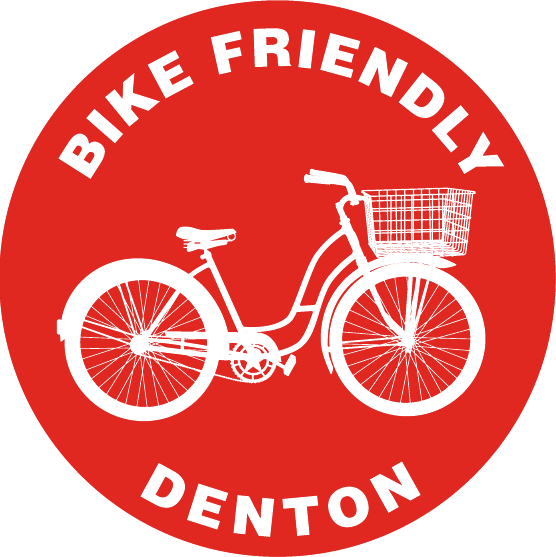W Hickory Bike Lane Gets More Bollards
May 5, 2021
After complaints of people continuing to block the W Hickory bike lane with cars, city staff have doubled the number of bollards along Denton’s first protected bike lane.
Additional bollards along the protected bike lane on W Hickory St.
The bollard spacing for W Hickory was originally based on the maximum recommended distance from the Federal Highway Administration of one bollard every forty feet. The typical passenger car is fifteen to sixteen feet long, and parallel parking spaces are 22-26 feet long. Spacing bollards forty feet apart leaves more than enough room for most vehicles to weave into the bike lane.
Bollards are typically used to discourage motorists from driving, stopping, or parking in the bike lane. Blocked bike lanes cause safety issues and conflict by forcing people on bicycles to behave unpredictably. When there is a car or other obstacle blocking a bike lane, it forces the person biking to either merge into moving motor vehicle traffic, angering motorists, or onto the sidewalk, angering pedestrians. Merging into motor vehicle traffic in an unexpected location also increases the risk of crashes and injuries.
Bollard spacing was the double the length of a typical car.
Humans tend to choose the path of least resistance. If a bike lane is easy to enter with a car and is closest to a drop-off/pick-up area, many people will choose to park in the bike lane regardless of whether there are available parking spots nearby. This issue exists everywhere in the United States, including bike-friendly Portland, Oregon.
Blocked bike lanes are not functional bicycle infrastructure. They discourage people from choosing to bike instead of drive by making cycling too difficult or dangerous. They also increase crash and injury risk for the people who do ride by forcing them to weave in and out of the main travel lanes, sometimes riding against traffic like on Highland Street at UNT or on Oakland St between Komodo Loco and Oak St Draft House.
Multiple cars blocking the contraflow bike lane on Highland St at UNT (Photo from Highland_St_Parking_Lane on Instagram).
Truck blocking the contraflow bike lane on Oakland St near Komodo Loco.
Adding more bollards to W Hickory was a great step by city staff to respond to safety concerns and make it less enticing for people to park in the bike lane. As we move forward, we need to build infrastructure that makes bike lanes safe, functional, and free of obstacles. If a design is not functional, we need to find ways to improve it, learn from it, and use that knowledge for future projects so that more people will feel comfortable using a bicycle to travel around Denton.
Help the city track where bike lanes need attention by snapping photos and submitting requests through the Engage Denton app.
Further Reading:
Urban Bikeway Design Guide (NACTO, 2014)
Separated Bike Lane Planning and Design Guide (Federal Highway Administration, 2019)
It’s Too Easy to Park in Portland’s “Protected” Bike Lanes (BikePortland, 2021)





